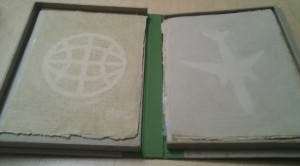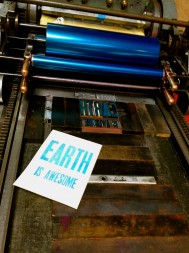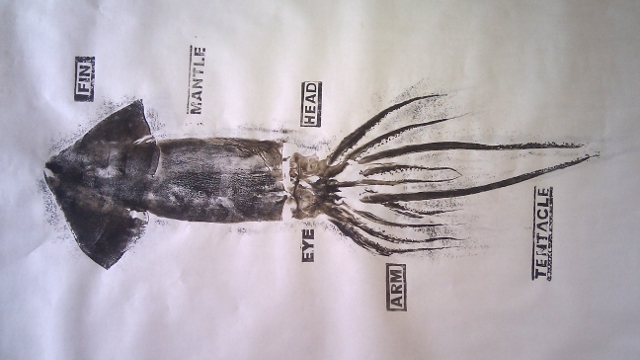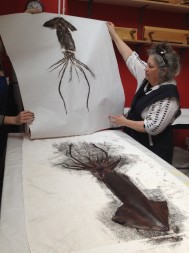On Saturday, April 21st, I found myself driving to San Francisco with a dead squid in the trunk. The squid part wasn't unusual, since I'm an educator with Squids4Kids. The unusual part was my destination: the San Franscisco Center for the Book. I've brought squid to classrooms and summer camps for years, but never to a nonprofit foundation for book arts.

The occasion was SFCB's annual Earth Day Extravaganza, where I oscillated between fielding questions about squid and exploring the center's current art exhibition, "Left to Chance: In Search of the Accidental Book Art." In honor of the 100th birthday of avant-garde composer John Cage, the pieces all shared an element of luck or randomness. This may sound weird--but it made me think of science. Could Cage's emphasis on making people notice their existing environment, along with pieces in "Left to Chance" that made use of natural accidents like sunlight fading paper, be just another manifestation of the scientist's urge to observe and describe the natural world? Fun fact: Cage himself was an amateur mycologist; his collection of fungi is currently housed at UC Santa Cruz.

Plenty of other people were perusing the artwork, but Saturday's hands-on activities were the real draw. As SFCB co-founder Kathleen Burch said, "People want to get their hands inky." At one classic Vandercook printing press, you could create a broadside in blue ink: EARTH IS AWESOME. Another printed a book cover in green ink with 10 tips for easing up on Earth. At the next table, you added pages and bound the book by hand. (All the matierals were either donated or recycled.)
And then, in the back room, you could print a squid.


